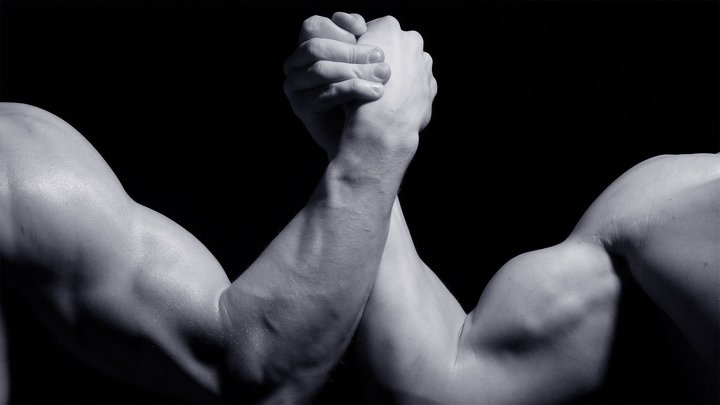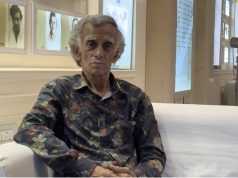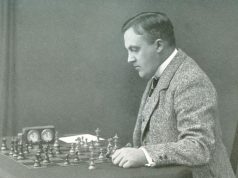In colleges, in canteens, in cafes and restaurants- an impromptu Panja often breaks. Two grasping hands, cheering crowd, deep breathe and some two-three minutes of intense action culminate in a win. Thereafter, the action stops, people go back to work and the scene is left desolate. This is the way we look at Panja but to some it is the Armwrestling-a sport played professionally across nations.
HISTORY OF ARM WRESTLING
An Egyptian painting, in a burial chamber mural from the tomb of Baqet III, depicted a type of Armsport that takes us back to the history of this sport to 2000 B.C. Whatsoever, the sport existed beyond time and came to be known as Indian Wrestling when practiced by frontier soldiers during the 19th century. But its popularity rose amongst nomads and travellers who played a game or two while staying in roadside inns and motels.
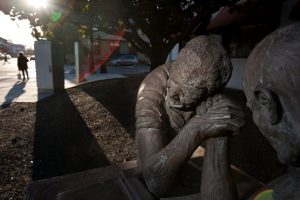
This tavern popularity was backed by Bill Soberanes, a Californian journalist, who in 1952 organised the first Wristwrestling bout at Gilardi’s Saloon in his native city of Petaluma. The competition was won by some Oliver Kolberg who defeated Jack Homer in the match. A decade after its first introduction, Bill joined hands with his business partner and sports enthusiast Dave Devoto to form the first Wristwrestling Championship in the World. Both Bill and Dave took the event to the largest auditoriums in Petaluma in 1962.
GRADUAL GROWTH & TELEVISION TELECAST OF ARM WRESTLING
The competition grew with a gradual increase in competitors competing in 35 divisions with more than 5,000 dollar as prize money. Contestants arrived from the Soviet Union and some European countries as well. The sport got a major boost from Charles Schulz, the creator of ‘Peanuts’ cartoon. The cartoonist did a series of comic strips in which Snoopy was headed to Petaluma to try to win the championship. However, in the last strip, he was barred from competition because the rules require that opponents have to lock thumbs but unfortunately Snoopy had no thumb.

Schulz’s publicity through ‘Peanuts’ helped Dave Devoto to sign a contract with the American Broadcasting Corporation (ABC) in around 1969. The company broadcasted the championships on air for 16 long years, from 1969 to 1984. It also emerged to be one of the top-rated episodes on ABC’s ‘Wide World of Sports’ from the late ’60s to the mid-’80s as most of the people learnt about this sport from the telecast. By October 1995, Learning Channel started filming the Armwrestling event and broadcasted it 4 times all across the globe. Other channels like NBC also started broadcasting the sport adding to the overall popularity of the game. Both Arm and Wristwrestling have their dedicated followers. Though these two types of wrestling are generally considered the same sport, there’s one slight technical difference between them. In Wristwrestling, the competitors grip their free hands across the table while in Armwrestling, they grip a peg with the free hand. But in both the forms, technique of the player has to be complemented by arm strength, length of the arm, arm density, wrist endurance and reaction time.
GREATS OF ARMWRESTLING

All these perfectly combined together has made John Brzenk one of the legend of this sport. Officially named by the Guinness Book of World Records, as the Greatest Armwrestler of All Time, Brzenk belonged to a family of wrestlers. He won his first world title in 1983 when he was 18 years old. His right forearm is 16 inches in circumference, and his left is 13.5 inches and with this he crushed opponents twice his size. This earned him the nickname Giant Crusher. Brzenk’s legendary Armwrestling career has been chronicled in a feature documentary Pulling John that followed him intimately for 4 years during which he competed all over the world.
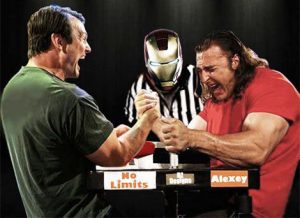
There are a handful of players who have defeated John Brzenk in his entire career. The most noted of them is Alexey Voyevoda. The famous Olympic champion in bobsleigh, Voyevoda is known in the professional Armwrestling circuit due to his triumph over Brzenk in 2004 in Zloty Tur Cup that has been recorded in Pulling John. The Russian is a 10-times World’s Armwrestling Champion.
Another man who defeated Brzenk in his career is Devon Larrat of Canada. Though, Brzenk was past his prime at that time, still defeating the all-time great is always special. In 2013, Larratt had a surgery on his right arm and elbow that forced him to compete in left-hand only for a span of time. He won the Left-Arm Heavyweight World Armwrestling League (WAL) in 2015 that he successfully defended in 2016. Simultaneously, he also won the WAL Right-Arm Heavyweight Championship in the same year.
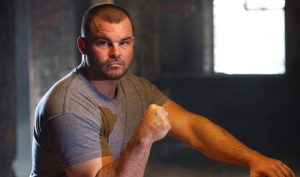
All these three, John Brzenk, Alexey Voyevoda and Devon Larrat, have been defeated by another great Armwrestler Travis Bagent. Travis is one of the world’s finest left-arm fighter whose speed determines his proficiency in the game. His psychological strength is also unmatched as he pins his opponent’s arm onto the touch pad of the table with a subtle speed.
ORGANISATIONAL DEVELOPMENT OF ARMWRESTLING
As the game developed, there was a need to follow a set of rules. A worldwide organization was the need of the hour. Henceforth, the World Armsport Federation (WAF) was founded in the United States with USA, Canada, Brazil and India as its first members. The popularity of this game was always there in India but an organization was required for its overall promotion.
“We formed the Indian Armwrestling Federation in 1977 to promote the sport among men and women. After the overall success of the 1st World Championship in Canada, we brought the 2nd World Championship in India. In 1980 the Worlds was held in Kolkata (then Calcutta),” said Bimal Kumar Chanda, President of Asian Armsport Federation.
RULES OF THE GAME
The organisations across nations follow some unique and quite distinctive rules laid down by WAF.
WEIGHT CLASS
Just like wrestling where there is a correlation between physical strength and size, in arm wrestling too, competitors compete with each other in weight classifications to ensure fair matches and competitions. The weight class for men starts from 52kg and then continues through 57kg, 63kg, 70kg, 78kg, 86kg, 95kg, 105kg, & +105 kg. However, the women’s division starts from 50kg and continues through 54kg, 60kg, 67kg, 75kg, 83kg, and +83kg. There are also Grand Master Weight Class, Junior Boys and Girls and even Physically Handicapped Class.
TABLE

The table top should be 36” long and 26” wide. The tables essentially consist of 7” x 7” of Elbow Pads that are placed 2” from their respective edge where each competitor places their elbow down to wrestle. They are padded with heavy high quality foam material to prevent injury. The Touch pads of 14″ long x 4″ high x2” wide are present on opposite sides of the tables where each respective competitor try to push his opponents hand onto. The Hand pegs are the other material present on the table that are placed midway at 13″ on each edge of the table. These pegs are generally 1” in diameter and are used by competitors to grip onto whilst wrestling, thus giving themselves some added leverage.
“But the table used is different depending upon whether the match is a standing or sitting one. For sit down competition, the tabletop should be 28” from the floor. For stand up matches, the table top should be 40” from the floor,” elaborated Bimal Kumar Chanda.
WAF COMPETITION RULES
WAF championships always have double elimination. A contestant is eliminated after losing twice. There is also no seeding prior to championships like some other sports. Contestants are placed on draw sheet by luck of the draw. Team members from the same country are general not matched against each other. “The contestants are given 60 seconds to come to the table after their names are announced. If they are unable to do so, they are declared as losers,” explained Bimal Kumar Chanda.
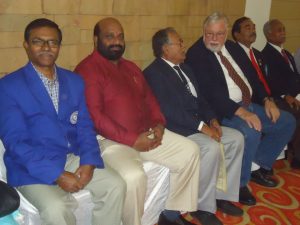
Although there is a steady rise in competitors in national and international level, the problem with this sport, as in many other sports, lies in lack of sponsorship. In India, almost 700 competitors enroll in the national championships. But there is exceptionally meek audience response to this game. As Bimal Chanda laments, “We are trying for the last 40 years to bring this sport under our Ministry, but there is no reply. Untill and unless it is approved, we will not get sponsorship, media coverage or any other benefits. There are some state organisations like in Arunachal Pradesh, Assam and Mizoram that get assistance from State Olympic Association. But we need all the other states to come forward.”
With a sportsmen at the helm, we expect our sports minister Rajyavardhan Singh Rathore to instigate a change in this indigenous sport. Once it comes under the Ministry, our very own Panja can be presented with a broad vision and perfect packaging. An intense sporting action of some minutes always grabs attention and definitely Armwrestling has that quality to entertain the spectators with its sporting value.

